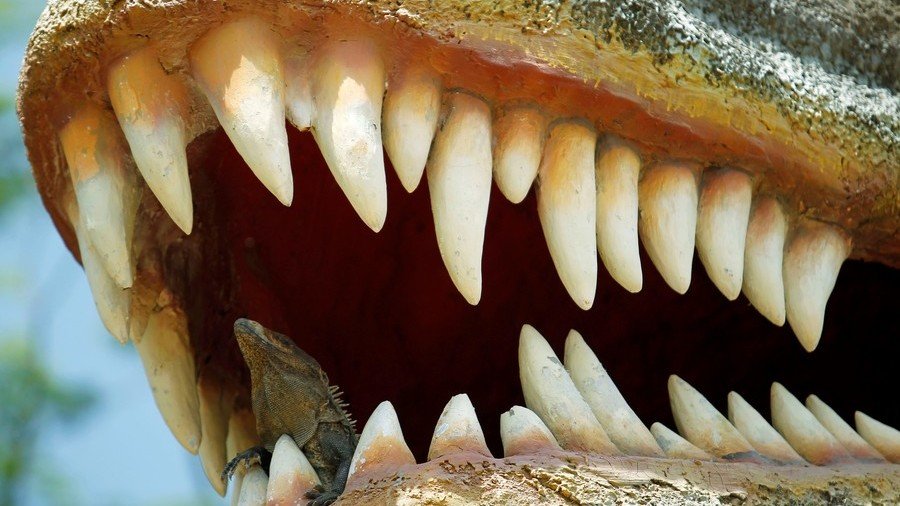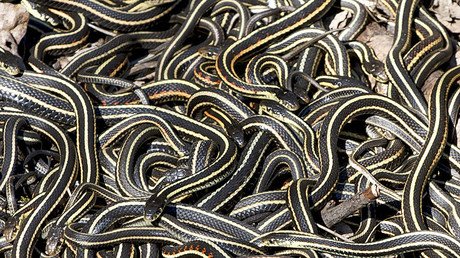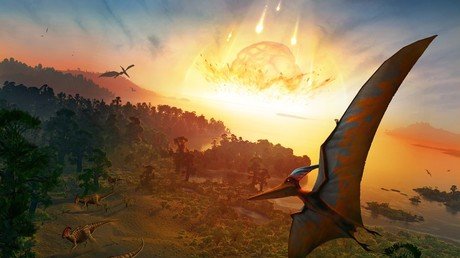Small in stature, big in bite: Prehistoric reptile’s mighty jaws recreated (VIDEO)

Using 3D modeling, scientists have been able to recreate the skull of a 200-million-year-old reptile, revealing that the little-known and small Colobops lizard had extremely powerful jaws.
About the size of an iguana, the Colobops Noviportensis battled for its existence among the first dinosaurs. Perhaps helping it survive and prey on tough adversaries, the creature had jaw muscles that betrayed its relatively small size, according to a new study from Yale University.
By reverse-engineering the remains of jaw bone fossils found in Connecticut back in 1965, researchers have discovered that the lizard had “exceptional” biting abilities.
READ MORE: Dinosaur fossils dating back 130 million years found at building site in China (VIDEO)
“Colobops would have been a diminutive but plucky little beast, part of a little known menagerie of small animals that live[d] among the first dinosaurs,” said Bhart-Anjan Bhullar, senior author of the new study, published in Nature journal.
But its tiny frame hid some pretty big and potentially bone-crushing secrets. “Despite its lizard-like aspect, it is in fact an early branch-off of the lineage leading to dinosaurs and birds. Also, its little jaws could bite harder than anything else its size. Perhaps that big bite allowed it to feed on tough, armored prey impervious to weaker mouths,” Bhullar said in a statement.
READ MORE: ‘Siberian Titan’: Russian scientists discover new dinosaur species (PHOTOS)
The recreation of Colobobs is an incredible feat of statistical and modeling analysis, proving that partial fossils could be brought back to life digitally.
“Comparisons with modern reptile dissections showed that it had incredibly well-developed jaw muscles for its size, suggesting an exceptional bite, even compared to modern reptiles,” said Adam Pritchard, of the Smithsonian Institutions and the lead researcher of the study.
“It’s a great illustration of the critical importance of fossils big and small for understanding the diversity of organisms.”
Like this story? Share it with a friend!














